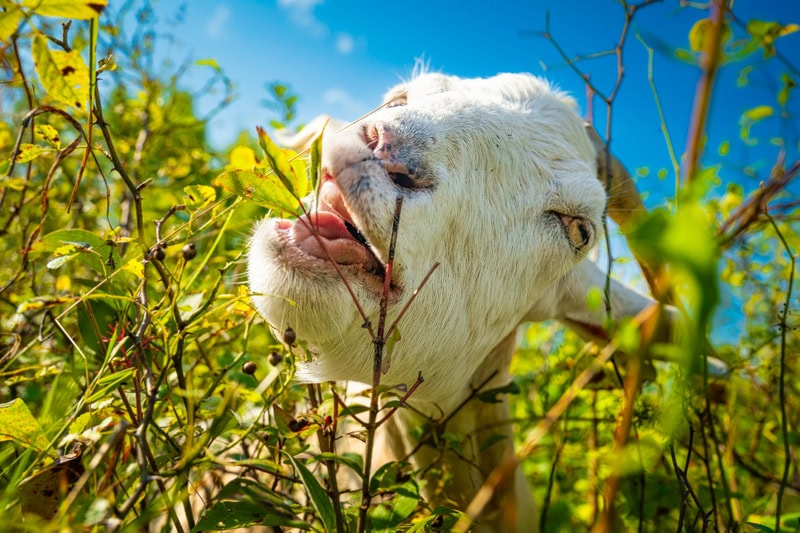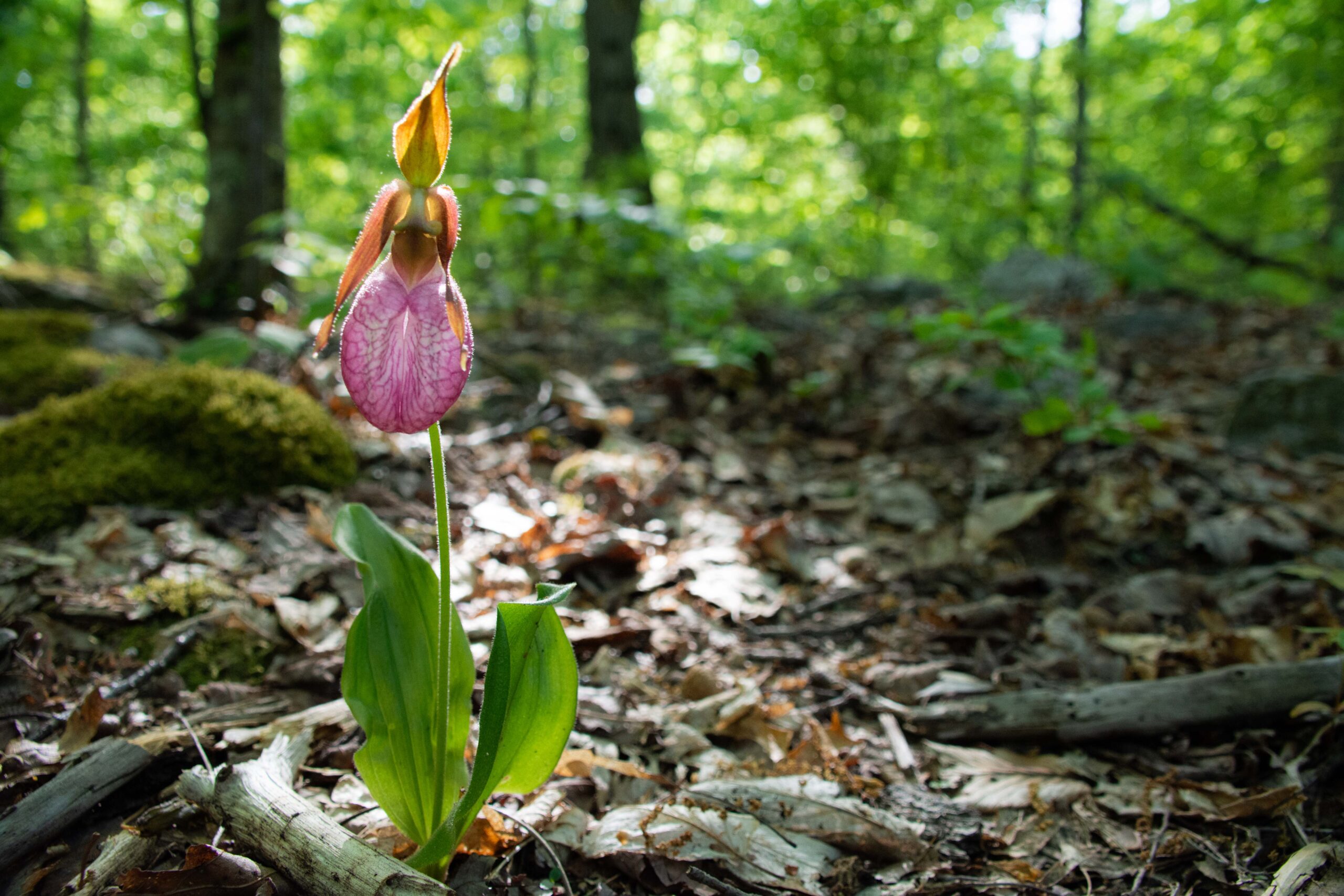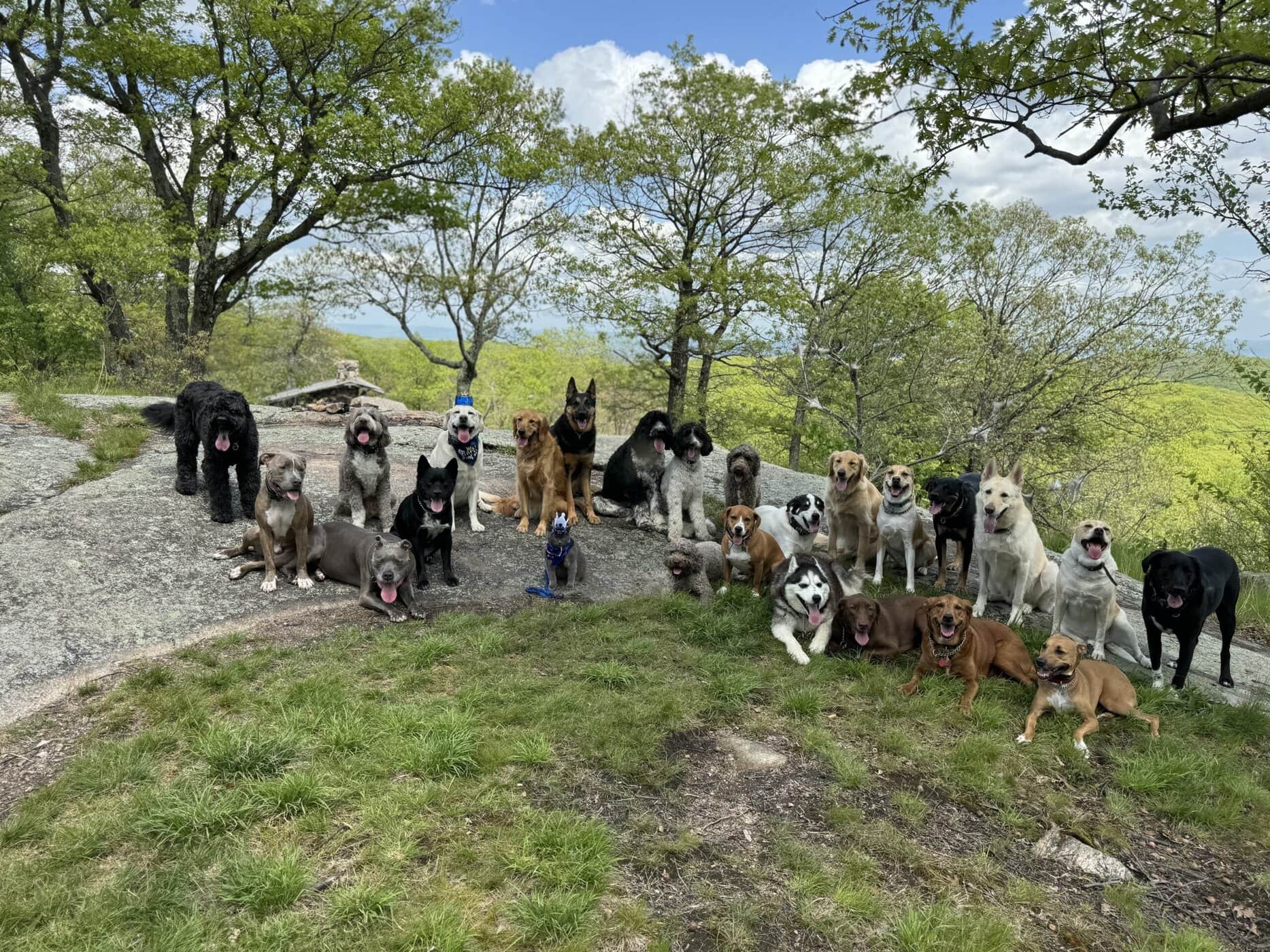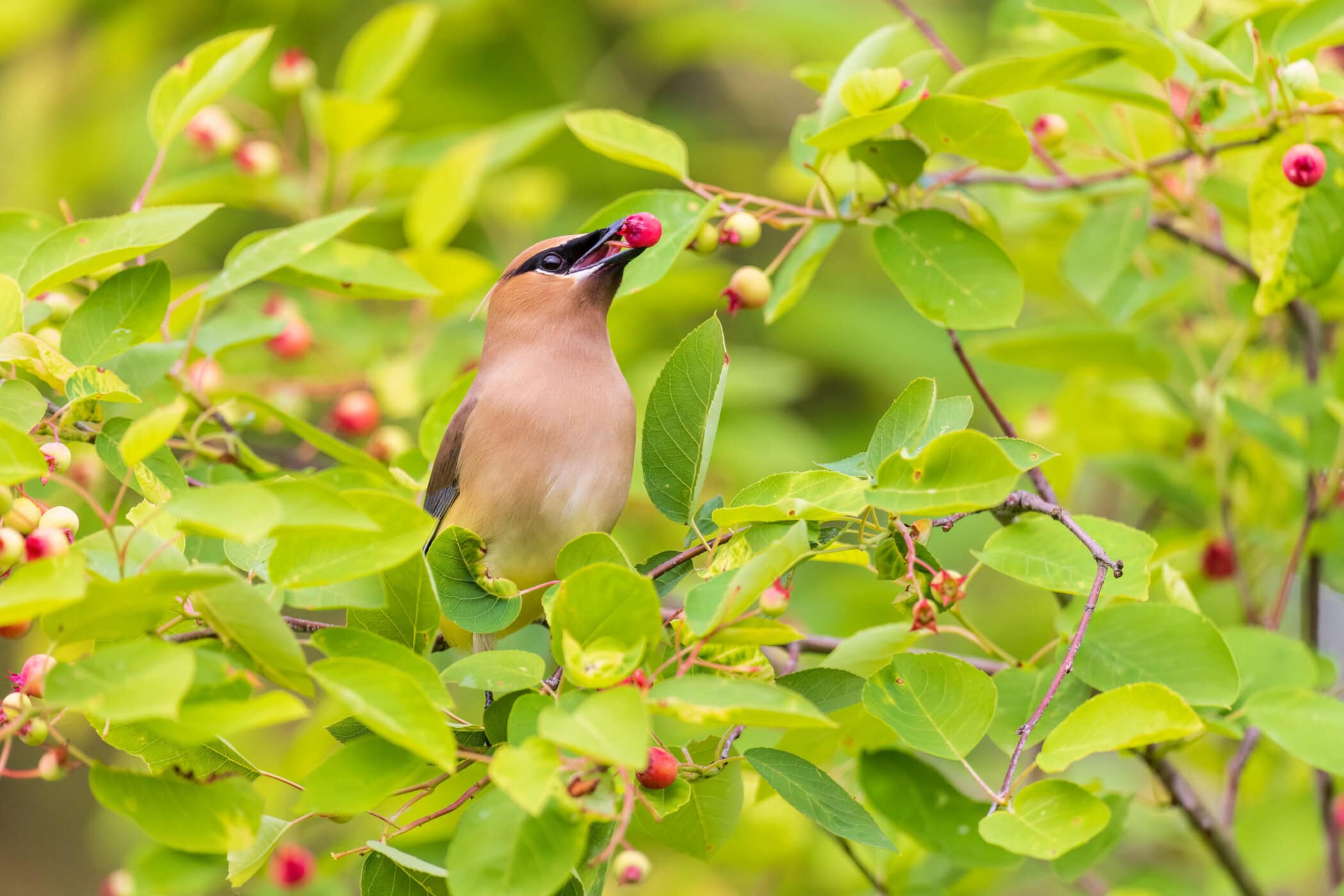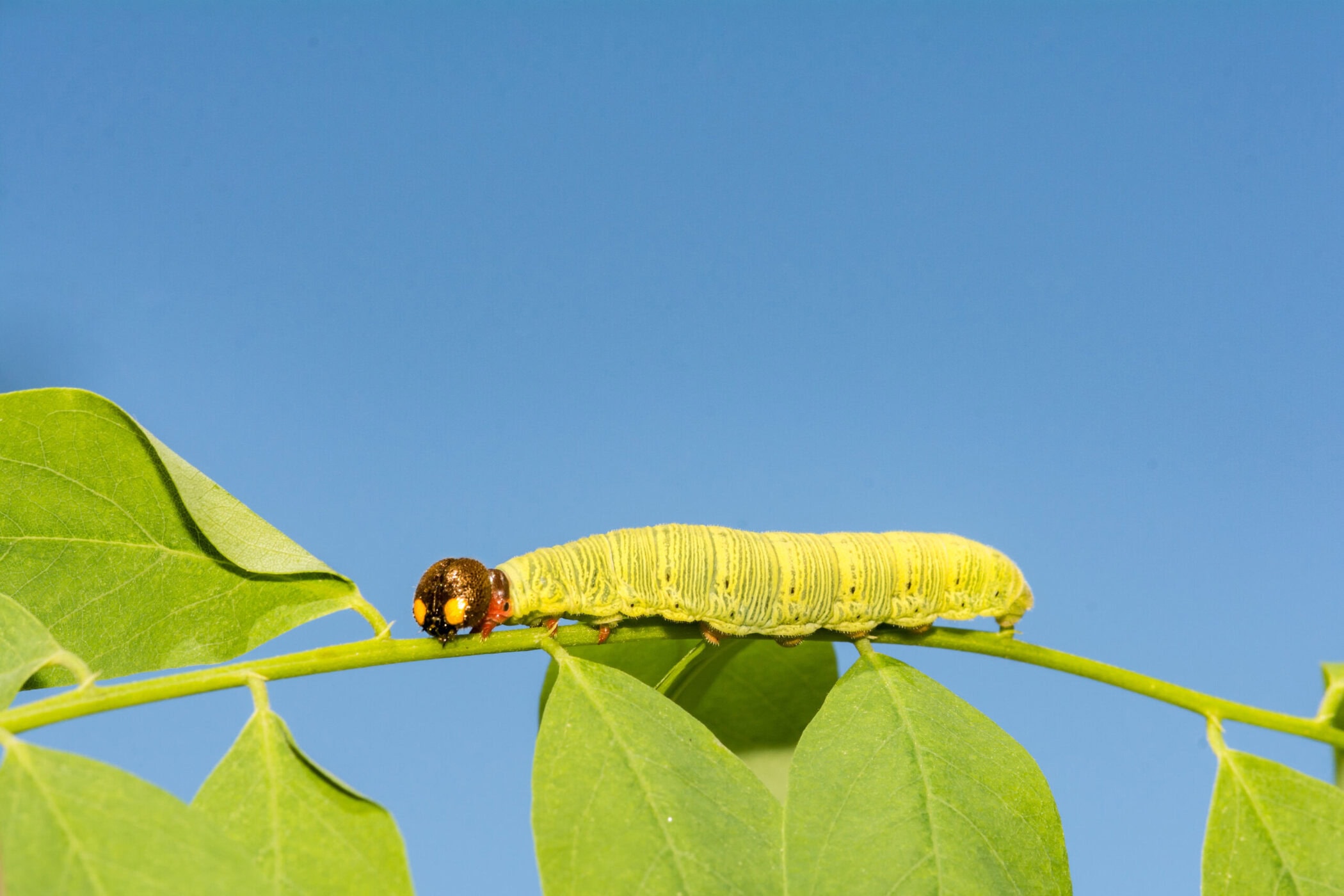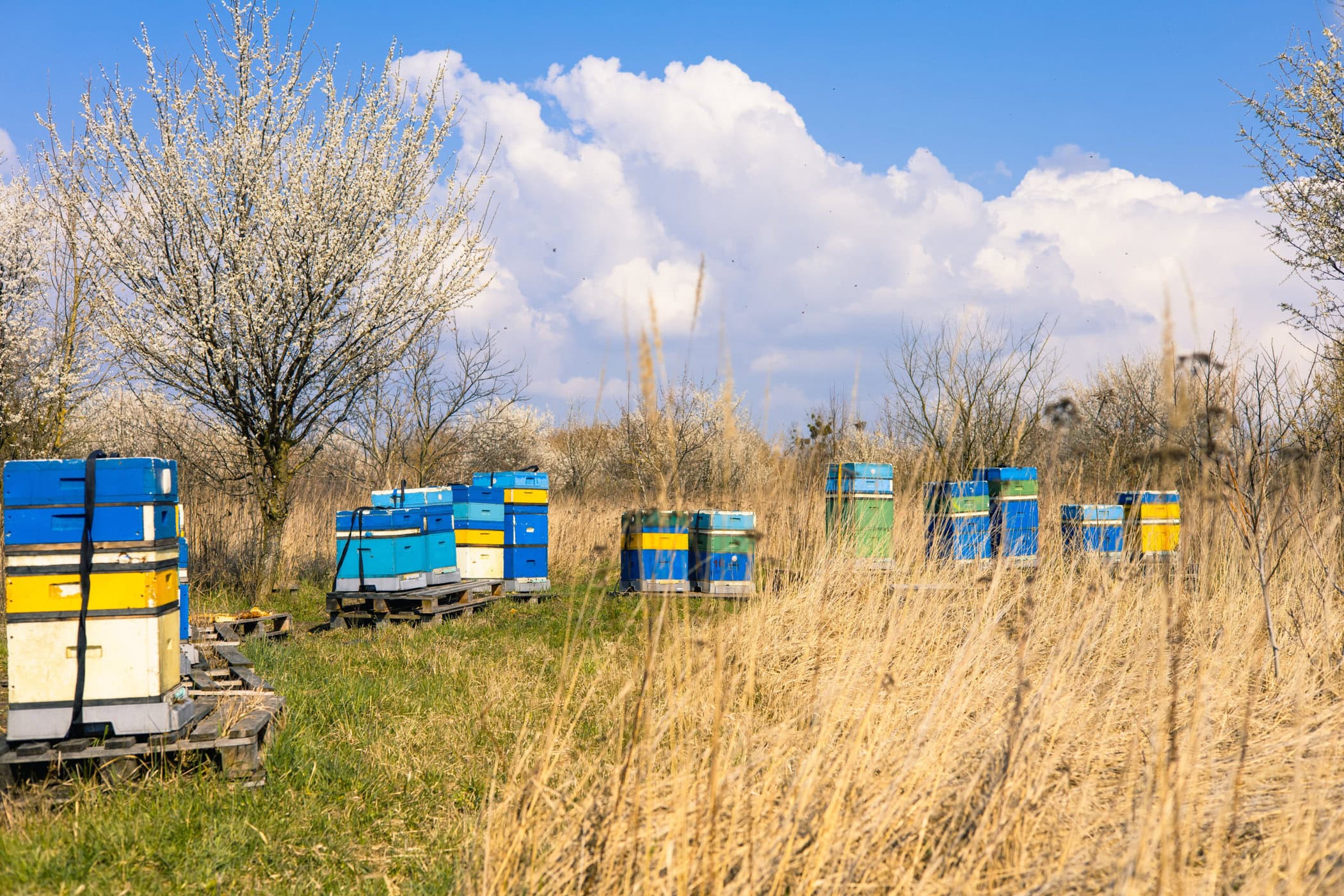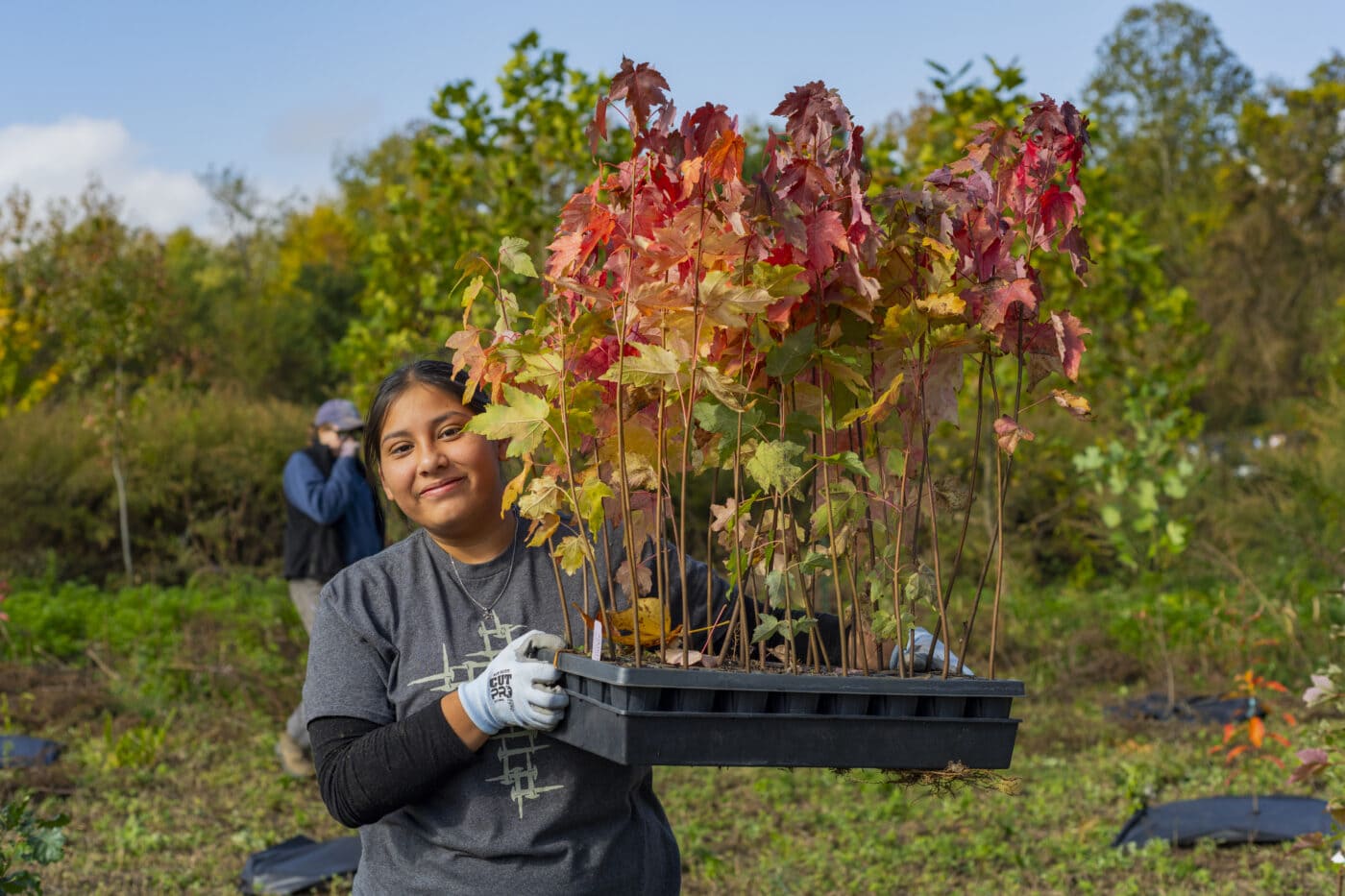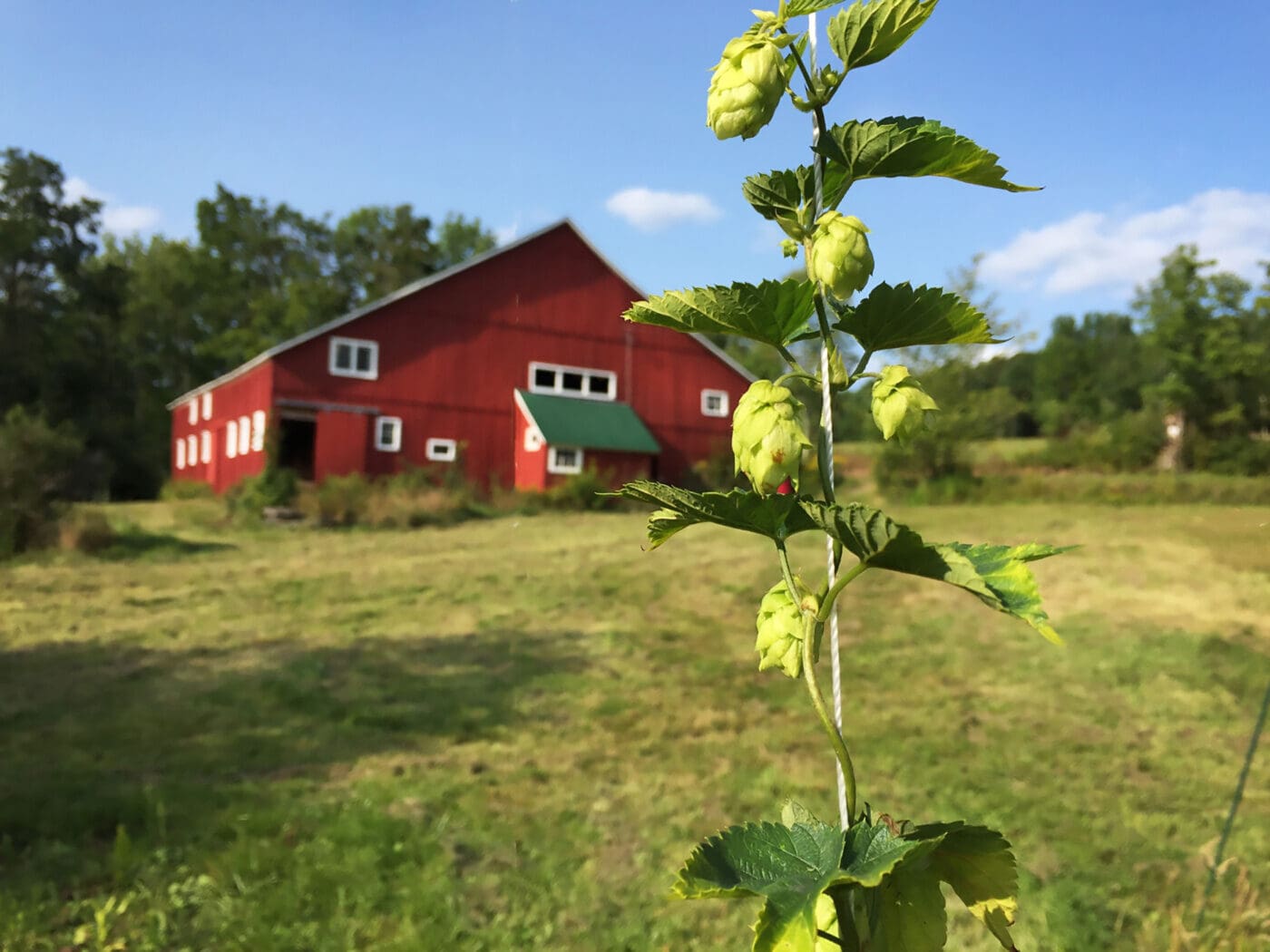Goats were first domesticated around 11,000 years ago from the wild bezoar. Along with sheep, they are thought to be among the earliest species domesticated, preceded only by the dog. Originating in the mountains of Iran, they are now found worldwide.
Over millennia, goats have been used for their milk, meat, hides, and hair. Now there is renewed interest in one of their other talents: They are eating machines, ingesting up to 3% of their body weight in dry plant matter in a single day.
Adult goats weigh between 100–200 lbs., depending on the sex and breed. And they are indiscriminate eaters, chewing their way through toxic and prickly plants that other browsing animals wouldn’t touch.
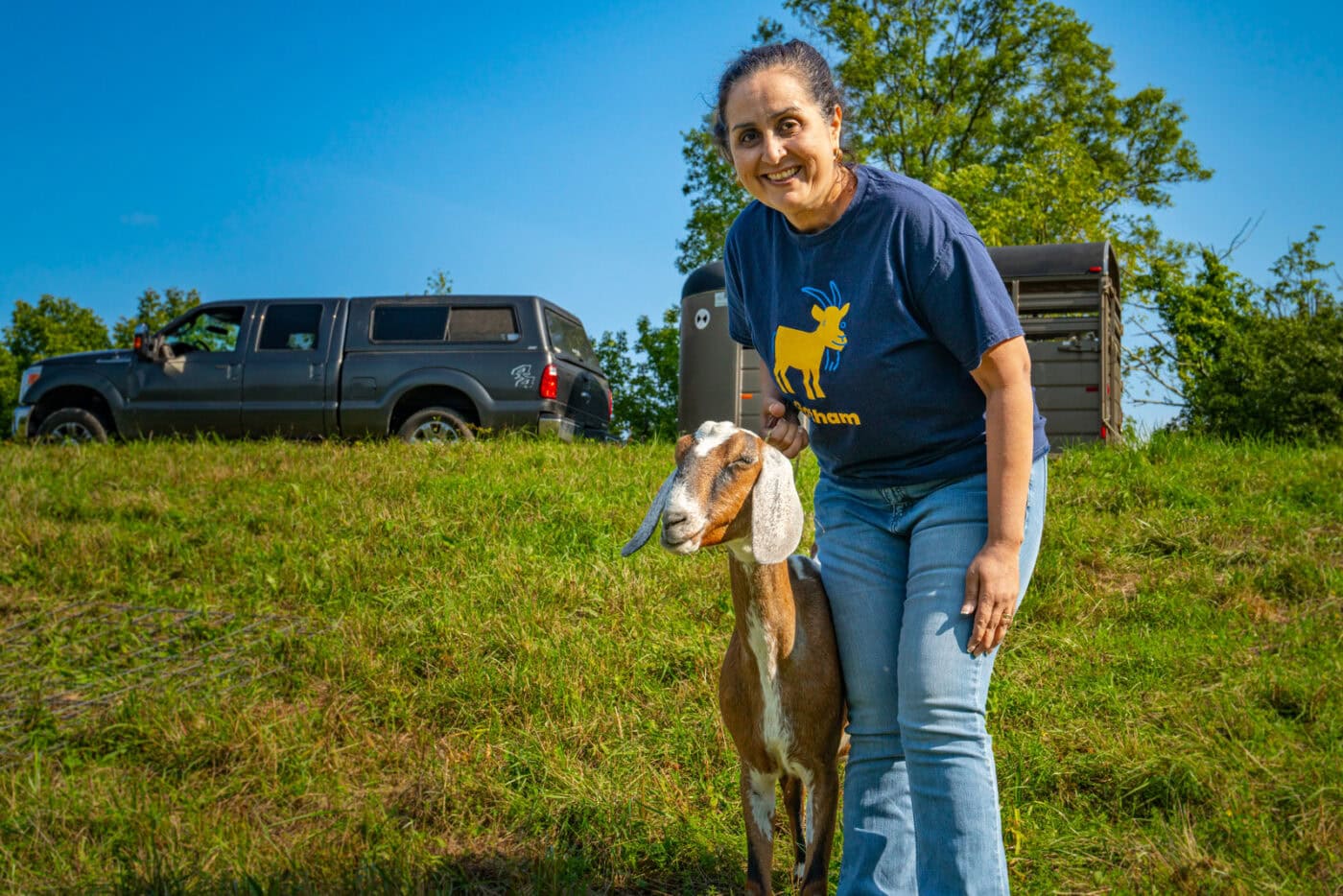
This has led to a cottage industry of goat service providers in the Hudson Valley — and across the country. These intrepid beasts can mow down intractable brush and weeds, including a range of invasive species, with a speed unmatched by human laborers. And they eliminate the need for herbicides or machinery, which helps hugely on steep hillsides or sensitive soils.
While goat services have attracted attention in the last decade or so, their use in targeted environmental remediation dates to the early 1900s. Their creation of firebreaks in California beginning in the 1990s and early 2000s is credited with spurring the current goat craze.
But if you’d like to see goats mow either on private property or a park or other civic space near you, what do you need to know? Planning for goat services is actually quite easy, according to people who manage them. “We would start off by having people fill out a questionnaire,” says Stephanie Wyant, who ran goat service company Hudson Valley Kinders with her partner Paul Williams out of Rhinebeck from 2015 to 2021. (In 2021, the couple downsized their goat herd and bought a farm in Madrid, N.Y.) Wyant and Williams would ask about the landscape, including the topography and vegetation, the availability of water, and the willingness of land managers to maintain the goats.
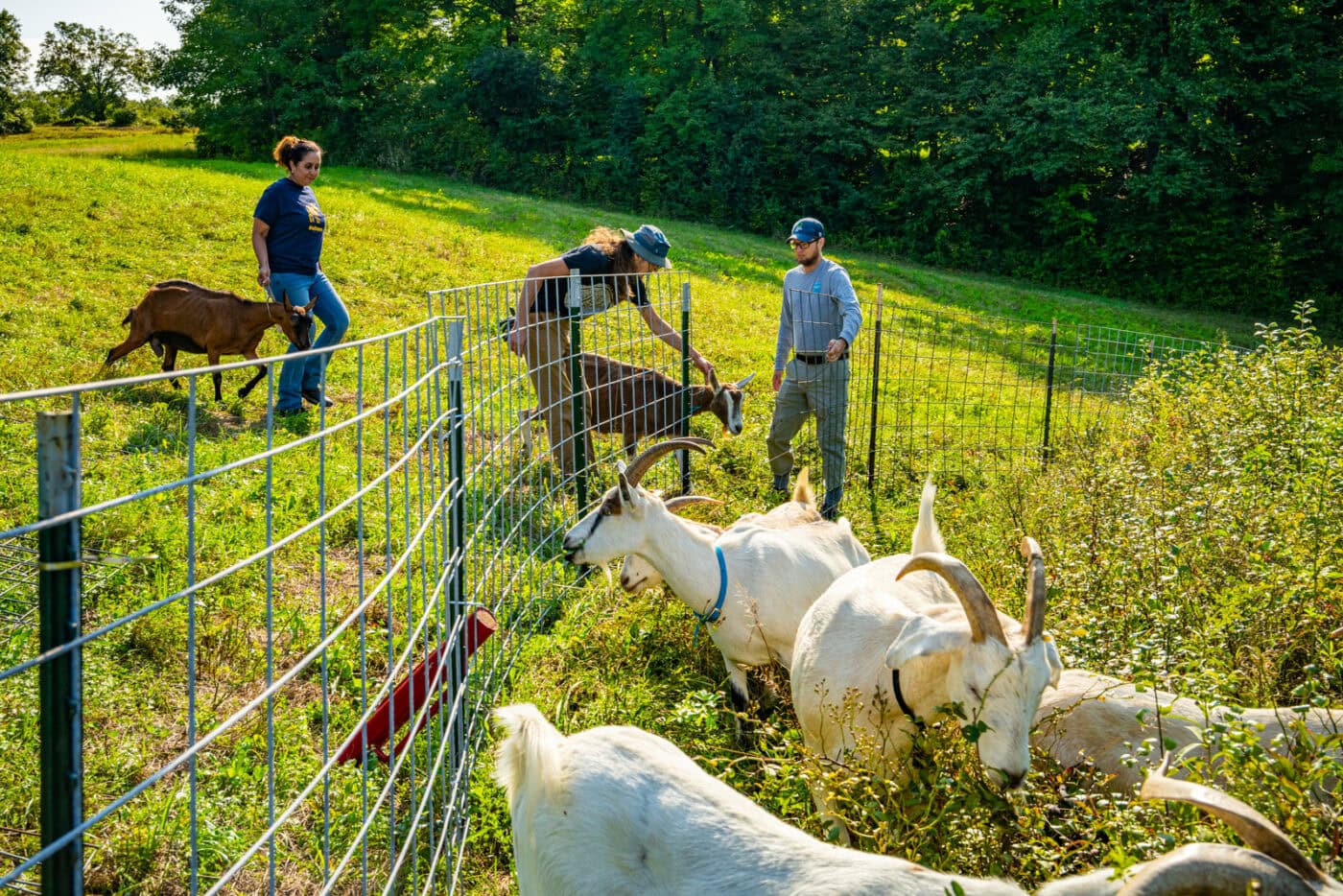
Depending on the situation, the herd may be tended on a daily basis by the service providers or by site managers — property owners or staff. In cases where the site managers are expected to care for the goats, as long as there is an accessible tap, watering takes very little time. In less accessible locations, the service providers may truck in water to ensure that their charges remain hydrated, which can greatly increase their daily effort.
When mother goats are milking their young, they do need supplementary feed — typically hay or grain, Wyant says. But many herds are sterile, comprising only neutered males (called wethers) and females.
Goat service providers often contain the herds using portable solar powered portable electrical fences, which are easy to install and remove even on tough terrain. “Fences are really important to keep goats in and dogs out,” says Ann Cihanek, who founded Green Goats of Rhinebeck with her late husband Larry in 2005 and now manages a clove-hooved staff of 120 with her son Jordan. “Goats don’t usually jump fences, so they are only about 4.5–5 feet tall.”
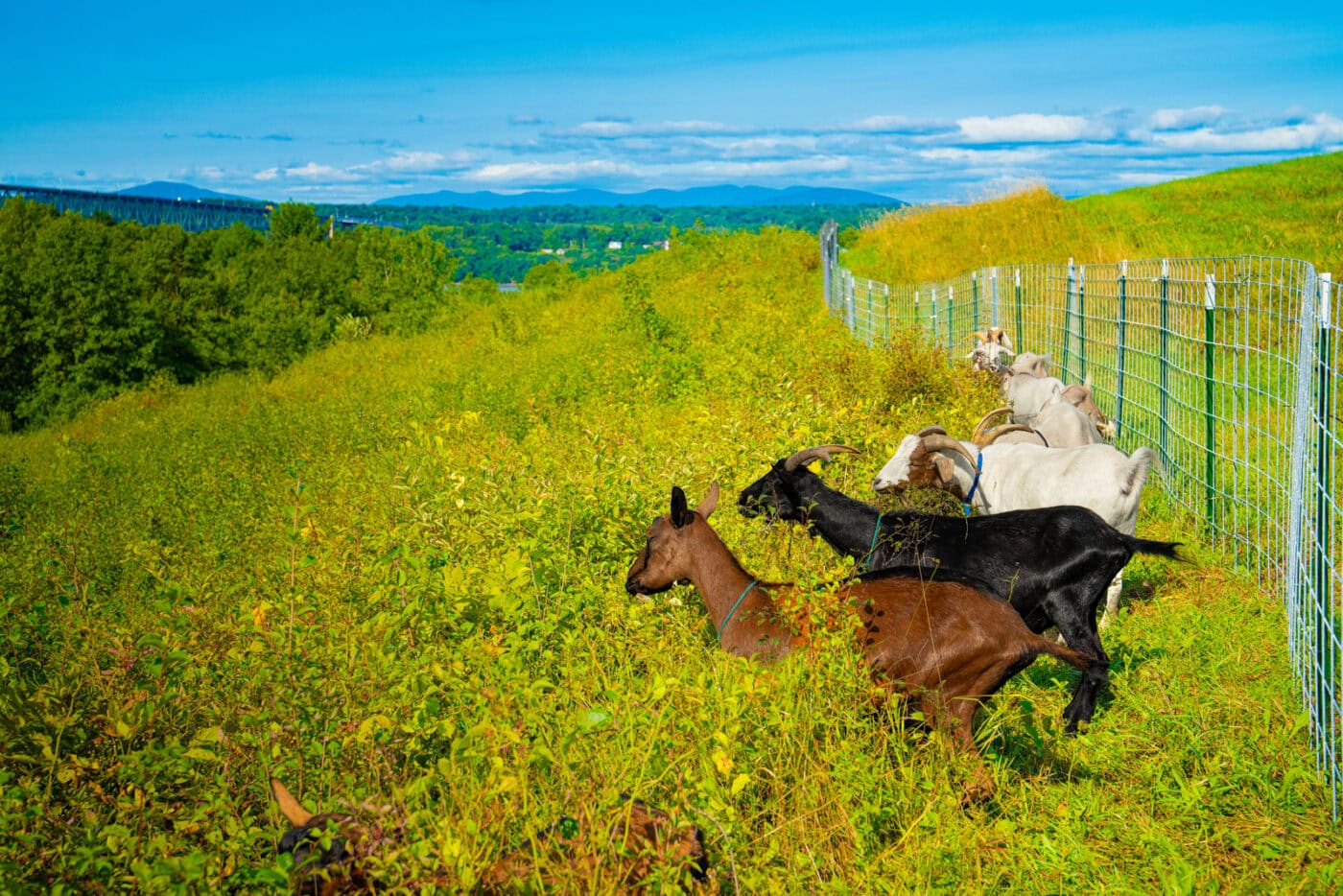
In 2018, a herd of maintenance goats breached their confines and rampaged through a nearby neighborhood in Boise, Idaho, but such cases are uncommon. “Sometimes turkeys will fly into a fence or a deer might get in, knocking it down. But we never had a goat get loose on the job,” Wyant claims. Predation is not usually an issue in the Hudson Valley. While coyotes are found in the region, attacks on livestock are relatively rare.
Goats are particularly useful for remediating sites overgrown by invasives, including multiflora rose, bush honeysuckle, wineberry, and bittersweet. They prefer to browse on plants at eye level, so they are perfect for tackling shrubby undergrowth. In fact, they prefer shrubs and taller plants to grass. Thorns pose no challenge to their tough palates.
Although it takes multiple visits to get invasives in check, goats can even handle pernicious plant species like tree-of-heaven and hogweed, known for the brutal skin rashes it causes in humans. And they can take on native nuisances such as grapevines and poison ivy, too.
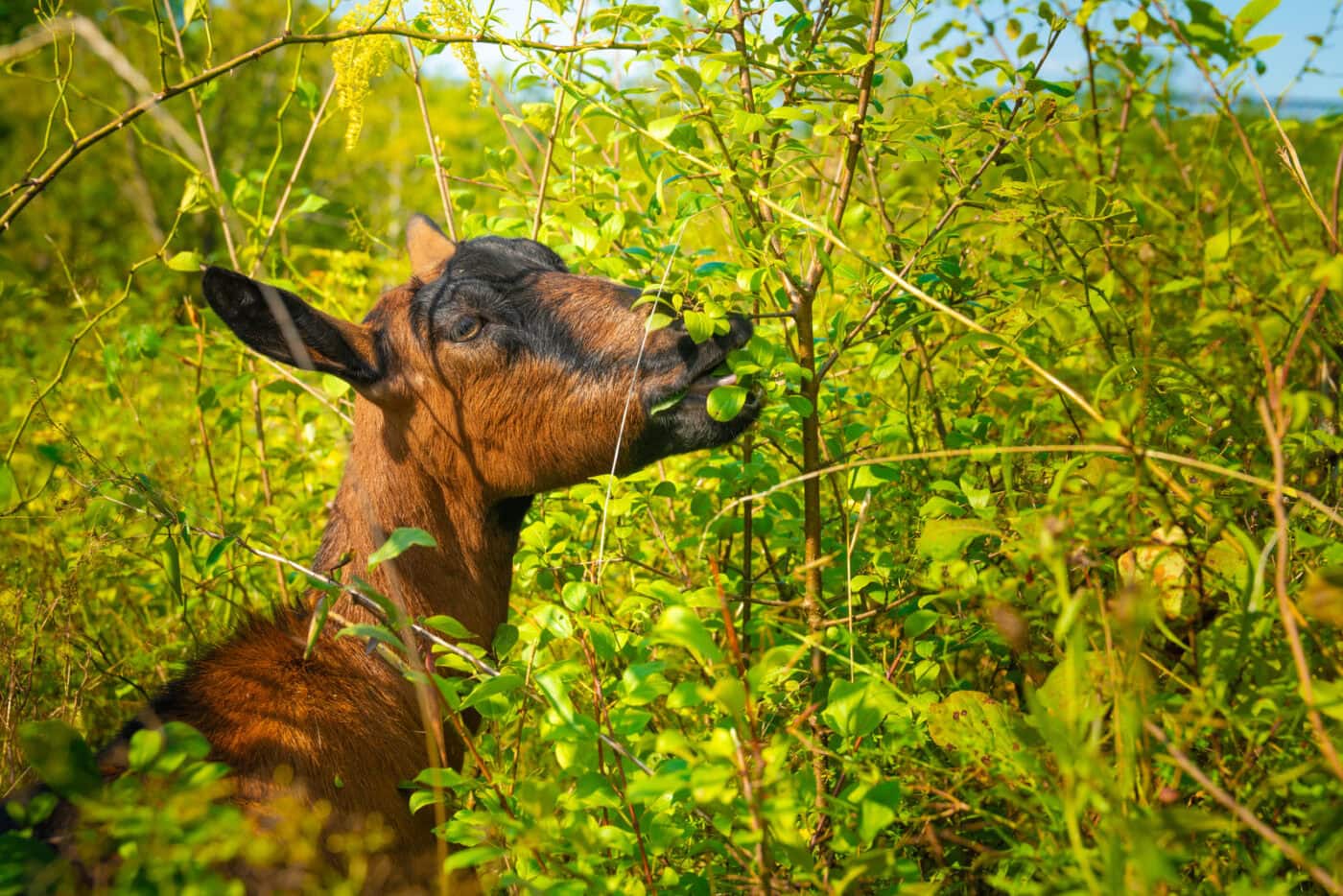
Their ruminant digestive systems neutralize seeds, so they do not return to the seedbank and germinate later, Wyant notes. The droppings can thus be left in place to fertilize the site — or removed and used as compost. It often takes several periods of grazing for the goats to eliminate the worst of the invasives. “We do two-part grazing,” Cihanek explains. “We bring them in spring, have them eat the invasives and take them out, giving the plants a chance to regrow. Then we bring the goals back in late summer or fall.”
The property owners may need to follow up, pulling out the remnants of more resilient plants. “For the first time, the clients are able to see the shape of the land and see what they have,” Cihanek says of heavily vegetated sites. The areas can then be allowed to regenerate with native species in the seedbank or replanted and landscaped as desired.
Sometimes land managers want the goats to come back even after they have completed their jobs — simply for the joy they provide to local residents. To quote Black Peter, the sinister goat in the 2015 horror film The Witch, this arrangement allows both goats and humans to “live deliciously.”


